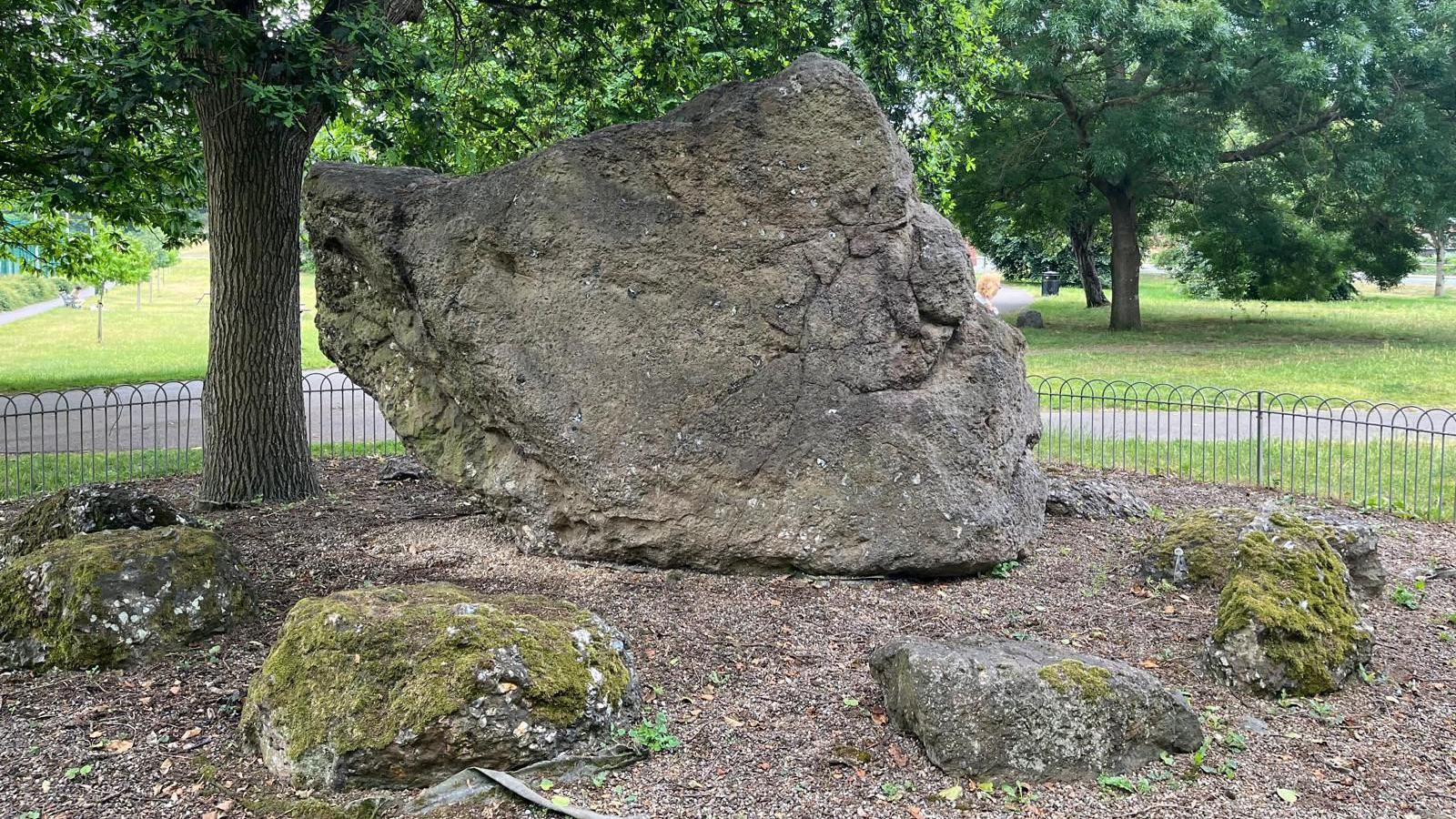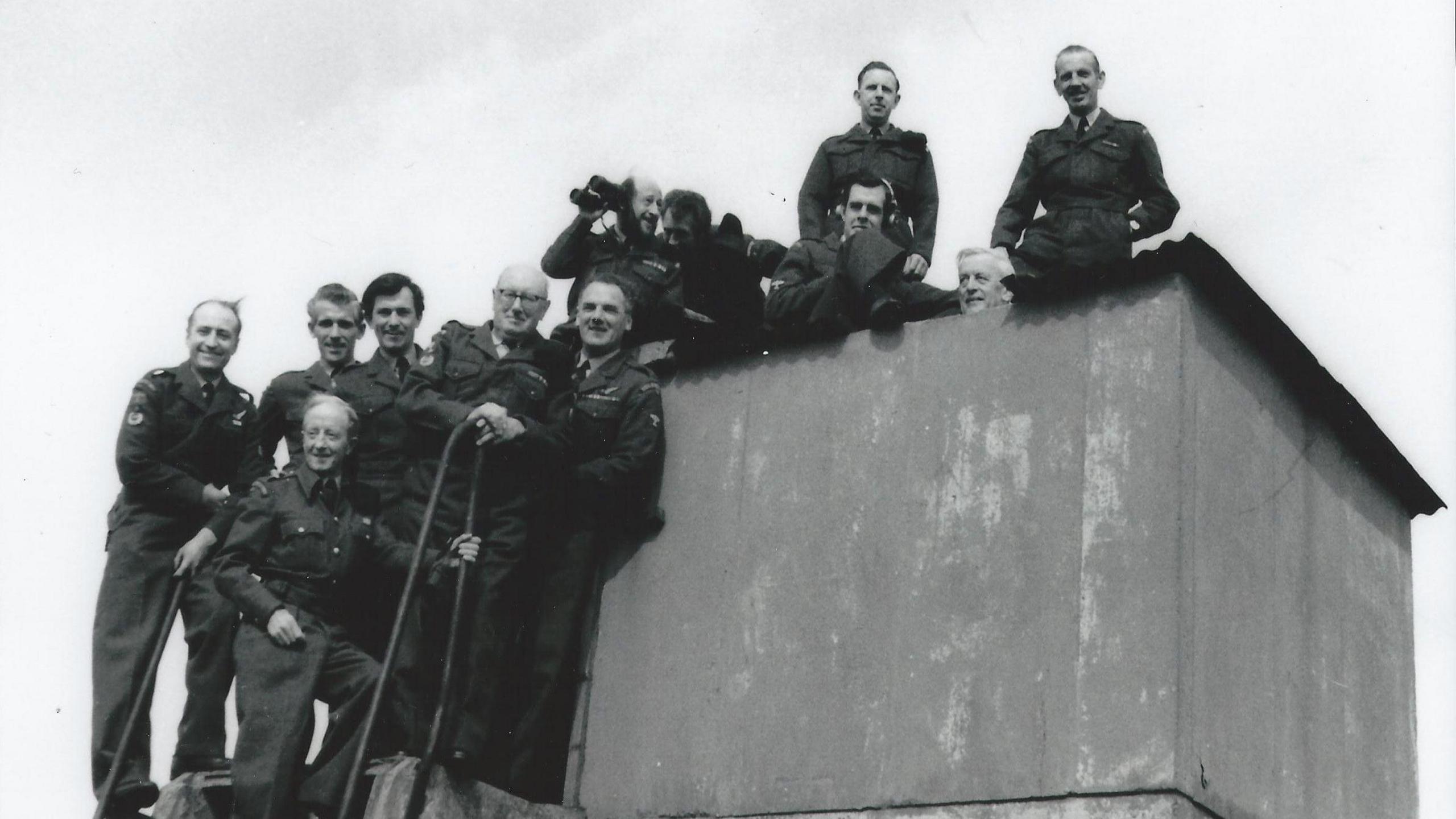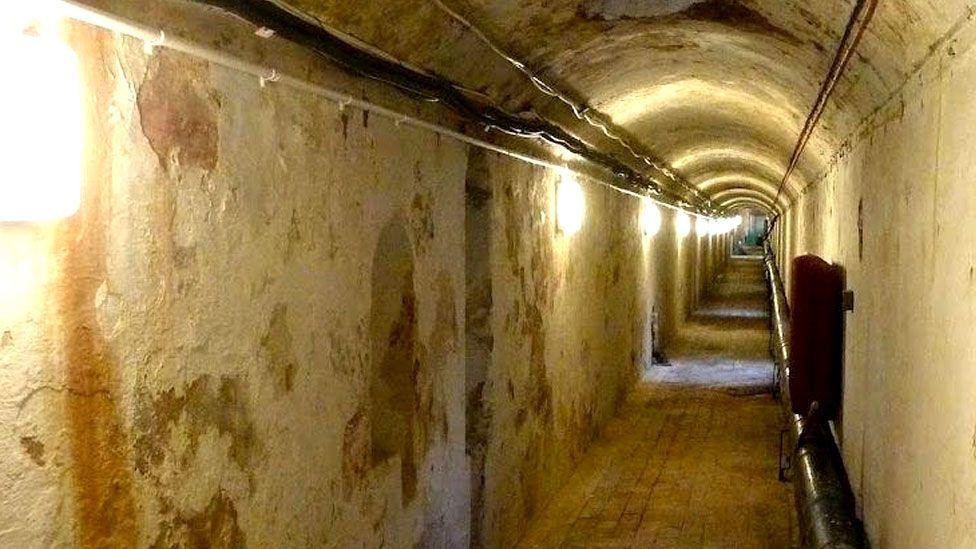The lost Druid stone circle of East Sussex

One academic described the stone as "very strange"
- Published
Tucked away in a corner of Hove Park in East Sussex is a big, brown and somewhat unassuming boulder.
But the story of the so-called Goldstone is far from unremarkable.
According to author Julian Gyll-Murray, it is believed that the Devil angrily kicked the several-tonne boulder near its current location after stubbing his toe on it while digging through the South Downs to try and flood the area with seawater.
"The Devil in Sussex folklore is not the character from the bible. He's a mischievous, impish figure who tries to do something [and fails]," Mr Gyll-Murray said.
'Sacrificial altar'
But reality tells a different story, according to Dr Geoffrey Mead, associate tutor at the University of Sussex.
He said the rock was discovered in the 19th Century on land that later became the Goldstone Ground – Brighton & Hove Albion's former football stadium.
Dr Mead said that people began visiting the "rather strange" stone believing it was once part of a sacred Druid stone circle.
However, he suggested this was largely contrived.
The stone that wouldn’t stay buried
"The Goldstone had a very lurid association for people in the 19th Century," Dr Will Abberley added, a senior lecturer at the University of Sussex.
"It was often assumed to have been a sacrificial altar where humans would be put to death," he said
Others romanticising Druids and Celtic culture visited the Goldstone feeling it brought them closer to nature and their "ancient identity".
"It felt like a clue to a forgotten past that had somehow survived," Dr Abberley added.

The Goldstone was eventually buried
The Goldstone became a popular local landmark, drawing large crowds to the then farmland where it sat.
As it got "more and more" attention, Dr Mead said the landowner, William Rigden, became "fed up" with sightseers trampling his crops and knocking down fences, so he ordered it to be buried.
And that is where the Goldstone stayed.
'Quite ridiculous'
That is until its location was discovered by Hove commissioner William Hollamby, who reportedly tracked down one of Mr Rigden's farm labourers to locate where it was buried.
It was later placed in Hove Park to mark its grand opening in 1906.
"Burying it was quite ridiculous," Dr Abberly said.
"When you hear the story, you think, 'what was that guy thinking?'."
"The Goldstone still gets the imagination going because it raises question, like Stonehenge or any other stone circle, about the intentions of the people behind it," he added.
"How could you not be fascinated by that?"
Follow BBC Sussex on Facebook,, external X, external and Instagram., external Send your story ideas to southeasttoday@bbc.co.uk, external or WhatsApp us on 08081 002250.
- Published15 February

- Published15 June

- Published7 July 2024
